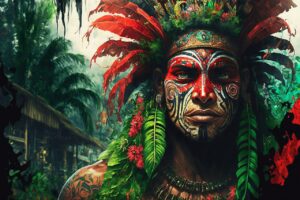Celebrating Diversity: A Comprehensive Guide to Tribal Festivals in India
Introduction:
India, with its kaleidoscopic cultural landscape, boasts a rich tapestry of traditions and celebrations. Among the vibrant threads that contribute to this cultural mosaic are the myriad tribal communities spread across the country. These indigenous groups, with their unique customs and rituals, celebrate a plethora of festivals that offer a glimpse into their rich cultural heritage. In this article, we delve into the enchanting world of tribal festivals in India, exploring the diversity, significance, and rituals that make each celebration a testament to the resilience and vibrancy of these communities.
Bastar Dussehra (Chhattisgarh):
Nestled in the heart of Chhattisgarh, the Bastar region comes alive during the Bastar Dussehra festival. Celebrated with great fervor by the indigenous tribes, especially the Maria and Muria Gonds, this festival spans over 75 days, making it one of the longest Dussehra celebrations in the country. The highlight is the ceremonial procession of deities, accompanied by traditional music, dance, and rituals that offer a glimpse into the tribal way of life.
Sarhul (Jharkhand):
Sarhul, celebrated by the Munda tribe in Jharkhand, is a festival dedicated to the worship of the Sal tree. Held during the spring season, it symbolizes the spirit of nature worship among tribal communities. The Munda people offer the first Sal flowers to the deity, seeking blessings for a bountiful harvest. Dance and music are integral parts of Sarhul, creating a vibrant atmosphere that reflects the community’s close connection with nature.
Hornbill Festival (Nagaland):
The Hornbill Festival, named after the Indian hornbill bird, is a celebration of Naga tribal heritage. Held in Nagaland, this festival brings together the diverse Naga tribes to showcase their traditional dances, songs, and crafts. It provides a unique opportunity for visitors to witness the rich cultural diversity of Nagaland, with each tribe contributing to the vibrant tapestry of the festival.
Tribal Festival of Rajasthan (Rajasthan):
Rajasthan, known for its royal heritage, is also home to various tribal communities. The Tribal Festival of Rajasthan celebrates the indigenous cultures of these tribes, including the Bhils, Garasias, and Meenas. The festival features traditional music, dance, and crafts, allowing visitors to immerse themselves in the vibrant traditions of Rajasthan’s tribal communities.
Aoling Festival (Nagaland):
Celebrated by the Konyak tribe in Nagaland, the Aoling Festival marks the arrival of spring. It involves traditional rituals, feasting, and vibrant cultural performances. The festival provides a platform for the Konyak people to showcase their unique customs, including the traditional attire adorned with beads, feathers, and intricate tattoos that reflect their rich cultural identity.
Karam Festival (Jharkhand, Bihar, Chhattisgarh, Odisha):
The Karam Festival is observed by various tribal communities, including the Oraon, Munda, and Ho tribes, in states like Jharkhand, Bihar, Chhattisgarh, and Odisha. Dedicated to the worship of the Karam tree, the festival involves singing, dancing, and rituals performed to seek blessings for a good harvest. It is a time for communities to come together, reinforcing social bonds through collective celebrations.
Chapchar Kut (Mizoram):
Chapchar Kut, celebrated by the Mizos in Mizoram, is a spring festival that marks the clearing of jungles for agriculture. The festival involves traditional dances, folk songs, and various competitions, creating a lively atmosphere that reflects the Mizos’ agricultural way of life. It is a time for the community to rejoice after months of hard work in the fields.
Wangala Festival (Meghalaya):
The Garo tribe in Meghalaya celebrates the Wangala Festival to express gratitude to the Sun God for a bountiful harvest. Also known as the Hundred Drum Festival, it features rhythmic drum beats, traditional dances, and vibrant costumes. The festival not only celebrates agricultural abundance but also reinforces the Garo community’s cultural identity.
Kut Festival (Manipur):
The Kuki-Chin-Mizo communities in Manipur celebrate the Kut Festival to thank the Almighty for a good harvest. This post-harvest festival involves traditional dances, folk music, and feasting, bringing communities together in a joyous celebration of their agrarian heritage. It serves as a time for reflection, gratitude, and communal bonding.
Hemis Festival (Ladakh):
While Ladakh is known for its Buddhist festivals, the Hemis Festival brings forth the region’s tribal heritage. Celebrated at the Hemis Monastery, this festival showcases traditional masked dances, religious ceremonies, and vibrant processions. The festival provides a unique blend of Buddhist rituals and tribal traditions, offering a glimpse into the cultural diversity of the region.
Bihu Festival (Assam):
Although Assam is known for its tea gardens and Brahmaputra River, it is also home to several indigenous tribes. The Bihu Festival, celebrated by the Bodo and other communities, marks the Assamese New Year and the arrival of spring. It involves traditional dance forms like Bihu, feasting, and cultural performances that reflect the Assamese tribal way of life.
Bhagoria Festival (Madhya Pradesh):
The Bhil and Bhilala tribes in Madhya Pradesh celebrate the Bhagoria Festival, a unique event that combines elements of matchmaking and cultural revelry. Young men and women from different tribes participate in a lively fair, showcasing traditional dances and rituals. It is a time for the community to come together, fostering social bonds and celebrating the spirit of love and togetherness.
Conclusion:
India’s tribal festivals are not merely celebrations; they are windows into the rich cultural diversity and traditions of the indigenous communities that have shaped the nation’s identity. These festivals, with their vibrant rituals, traditional dances, and communal celebrations, provide a unique opportunity for both locals and visitors to witness the resilience and dynamism of India’s tribal heritage. As we traverse the length and breadth of the country, from the verdant landscapes of the Northeast to the arid terrains of Rajasthan, the tapestry of tribal festivals unfolds, each thread contributing to the intricate narrative of India’s cultural mosaic. In embracing and understanding these festivals, we not only celebrate diversity but also honor the invaluable contributions of India’s tribal communities to the nation’s cultural heritage.